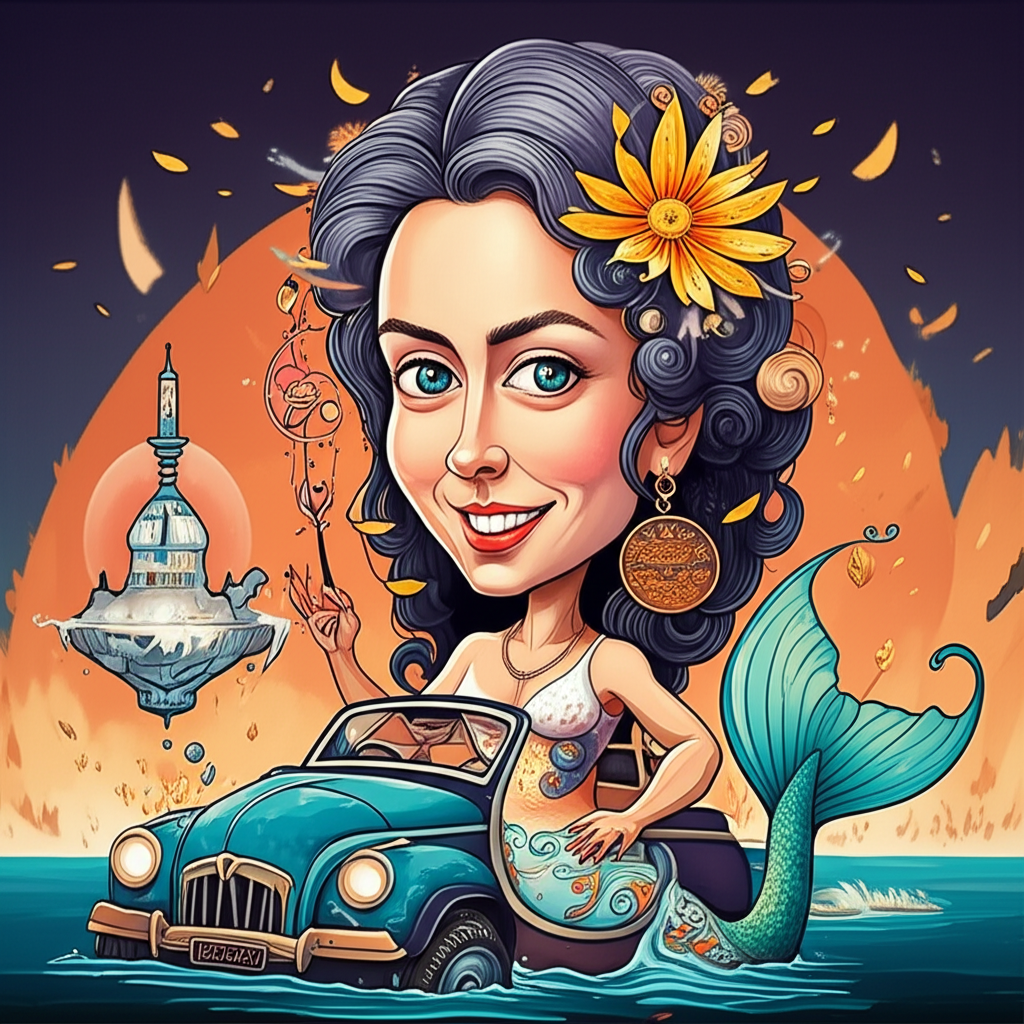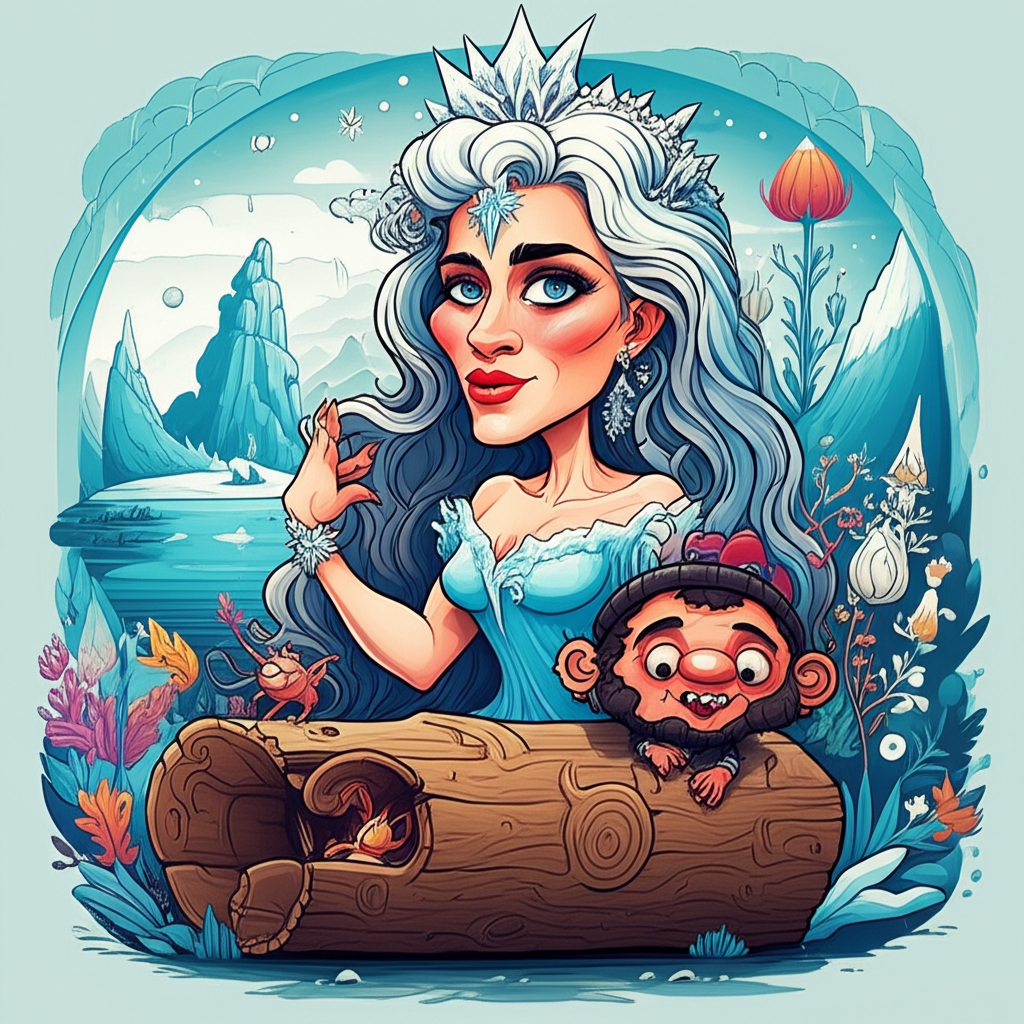
Across the vast, shadowed forests and along the winding, temperamental rivers of ancient Eastern Slavic lands, a tapestry of beliefs and stories was woven into the fabric of daily life. These were not pronouncements of absolute truth, but rather the shared imaginings of communities grappling with the mysteries of the natural world, the anxieties of existence, and the deep-seated human need to understand their place within a grand, often untamed, cosmos. Among these ancestral narratives, the legend of the Rusalka, often linked to the mystical Buyan Island, offers a fascinating glimpse into the worldview of those who lived centuries ago. This is a tale passed down through generations, a testament to the enduring power of folklore and the human capacity for imagination.
The origins of the Rusalka myth are deeply rooted in the pre-Christian Slavic cultures that flourished in the regions of what are now Russia, Ukraine, and Belarus. This was an era where the boundaries between the human and the spirit world were fluid, and where the forces of nature – the fertile earth, the life-giving water, the unpredictable weather – were often personified and imbued with powerful spirits. The world was perceived as alive, interconnected, and capable of both great benevolence and terrifying wrath. In this context, myths and legends served as vital tools for explaining the unexplainable, for navigating the challenges of survival, and for reinforcing social order. The stories of spirits like the Rusalka were not simply entertainment; they were woven into the rituals and daily lives of the people, offering explanations for phenomena like floods, drownings, and the mysterious allure of certain watery depths.
The Rusalka herself is a figure steeped in ambiguity and a potent blend of allure and danger. Typically depicted as a beautiful, ethereal female being, she is intrinsically connected to water – rivers, lakes, and sometimes even ponds. Her appearance is often described as having long, flowing hair, sometimes green or pale, and eyes that hold the deep, unfathomable quality of the water itself. They are often portrayed as the spirits of young women who have met untimely deaths, particularly by drowning, or those who were unbaptized. This connection to tragic endings imbues them with a melancholic, yet powerful, aura. Their symbolic attributes are multifaceted: they represent the seductive and often perilous nature of water, its life-giving potential intertwined with its capacity for destruction. They can symbolize untamed femininity, fertility, and the powerful, often misunderstood, forces that lie beneath the surface of things. They are also seen as embodiments of lost innocence and the lingering sorrow of unfinished lives.
The narrative threads that weave together the Rusalka and Buyan Island paint a picture of a hidden, almost mythical realm. Buyan Island, in Slavic folklore, is a legendary, enchanted island said to be located in the far ocean, often at the center of the world or a place where the sky meets the sea. It is a repository of magical objects, a dwelling place for powerful beings, and a source of potent energies. Sometimes, it is said to be guarded by mythical creatures or shrouded in perpetual mist, making its discovery a perilous quest in itself. Within this mystical locale, the Rusalki are often depicted as inhabitants, their watery domain extending to the shores and depths surrounding this enchanted land.
The tales often speak of the Rusalki’s irresistible charm and their hypnotic songs, which lure unsuspecting travelers, particularly young men, towards the water’s edge. These songs, like the gentle lapping of waves or the whisper of reeds, are said to be so enchanting that they can draw a person away from their senses, compelling them to plunge into the water and meet their doom. Once submerged, the victim is then held captive by the Rusalka, their life force perhaps absorbed, or their soul forever bound to her watery realm. Some stories suggest that the Rusalki might also seek out the living to learn about the world they can no longer experience, or to find companions for their eternal existence. Their playful, yet deadly, nature is a recurring theme, highlighting the dualities inherent in the natural world they represent. They are not depicted as inherently evil, but rather as beings driven by their own otherworldly impulses and the tragic circumstances of their existence.
The symbolism embedded within these ancient stories is rich and profound. The Rusalka’s connection to water speaks to the fundamental importance of this element in agricultural societies. Water brought life through irrigation and sustenance, but it also brought destruction through floods and drowning. The Rusalka, therefore, could represent the fear of nature’s unpredictable power, a reminder of humanity’s vulnerability in the face of overwhelming forces. Her seductive nature might symbolize the temptations of the unknown or the allure of forbidden desires, leading individuals astray from the path of prudence and safety. Furthermore, the tragic origins of many Rusalki stories could reflect societal anxieties surrounding death, particularly the deaths of young women, and the lingering sorrow of their lost potential. Buyan Island, as a mystical nexus, could represent a place of ultimate truth, hidden knowledge, or the spiritual realm, accessible only through extraordinary means or at great personal cost.
In contemporary interpretations, the echoes of the Rusalka and Buyan Island continue to resonate. These figures have found their way into literature, where authors explore themes of enchantment, the supernatural, and the darker aspects of folklore. In video games, Rusalki often appear as aquatic adversaries or enigmatic characters, their allure and danger translated into engaging gameplay mechanics. Movies and television shows draw inspiration from these myths to create atmospheric tales of mystery and the supernatural. In academic circles, folklorists and cultural historians study these narratives to understand the beliefs, fears, and social structures of ancient Slavic societies, offering insights into the human psyche and the evolution of storytelling traditions.
As we delve into these ancient narratives, it is crucial to remember their context. The stories of the Rusalka and Buyan Island are the rich cultural heritage of ancient peoples, born from their unique experiences and their attempts to understand the world around them. They are imaginative constructs, not factual accounts. As Muslims, we recognize that only Allah (God) is the true Creator and Sustainer of all existence, the ultimate source of power and truth. These stories, therefore, serve as a reminder of the diverse ways in which humanity has sought meaning and connection throughout history. They are testaments to the enduring power of human imagination, the richness of cultural heritage, and the timeless tradition of storytelling, which continues to shape our understanding of ourselves and the world, even as we acknowledge the singular reality of our faith.





